Whenever I daydream about the Greek islands, Naxos pops up first. Naxos really nails that Cycladic vibe for anyone who wants ancient wonders, peaceful mountain villages, and endless beaches kissed by the Aegean Sea. Honestly, few places in Greece manage to mix history, local flavor, and those ridiculously long golden beaches quite like this island.
When I wander through the old town, ancient ruins and echoes of the past surround me. Yet, just a few minutes away, I stumble into tiny villages with quiet cafés and views that make me wonder if I should just stay put.
Whenever I need a break from sightseeing, there’s always another sunlit beach—some buzzing, some totally secret, all gorgeous. If you’re planning a summer trip and want a place that truly has everything, Naxos might be the one.
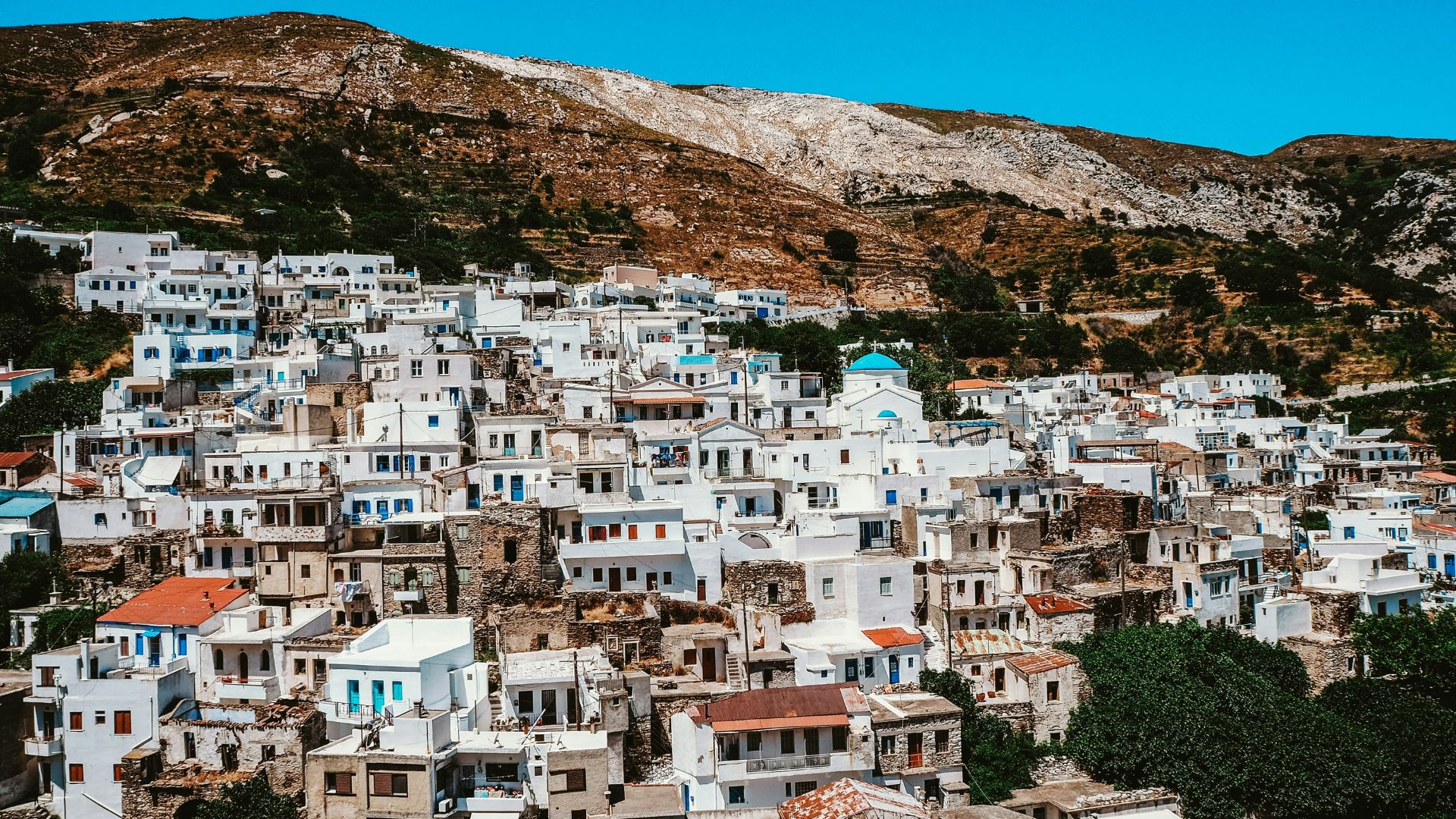
Finding My Cycladic Bliss: Why Naxos Stands Out
Naxos pulled me in with its mountains, classic villages, and honestly some of the best beaches I’ve ever seen in Greece. Picking the right Cycladic island can make or break a trip, and Naxos just delivers on all fronts.
A Unique Blend in the Heart of the Cyclades
Naxos sits as the largest of the Cyclades, and you feel the difference right away.
Sure, I found those bright blue waters and long sandy beaches. But I also wandered through green valleys and whitewashed towns tucked into the mountains.
Hiking in Apeiranthos, sampling local cheeses, and exploring ancient ruins felt like ticking every “must-do” off the Greek island list—all in one spot.
Some highlights I loved in Naxos:
- Miles of beaches (Agios Prokopios was a knockout)
- Hilltop villages like Filoti with tiny cafés
- Portara—that ancient marble gateway looking out over the sea
- Olive groves and farms, still a big part of daily life
The place feels real and local, but never dull. I could wake up in a sleepy village and be swimming in turquoise water by lunchtime.
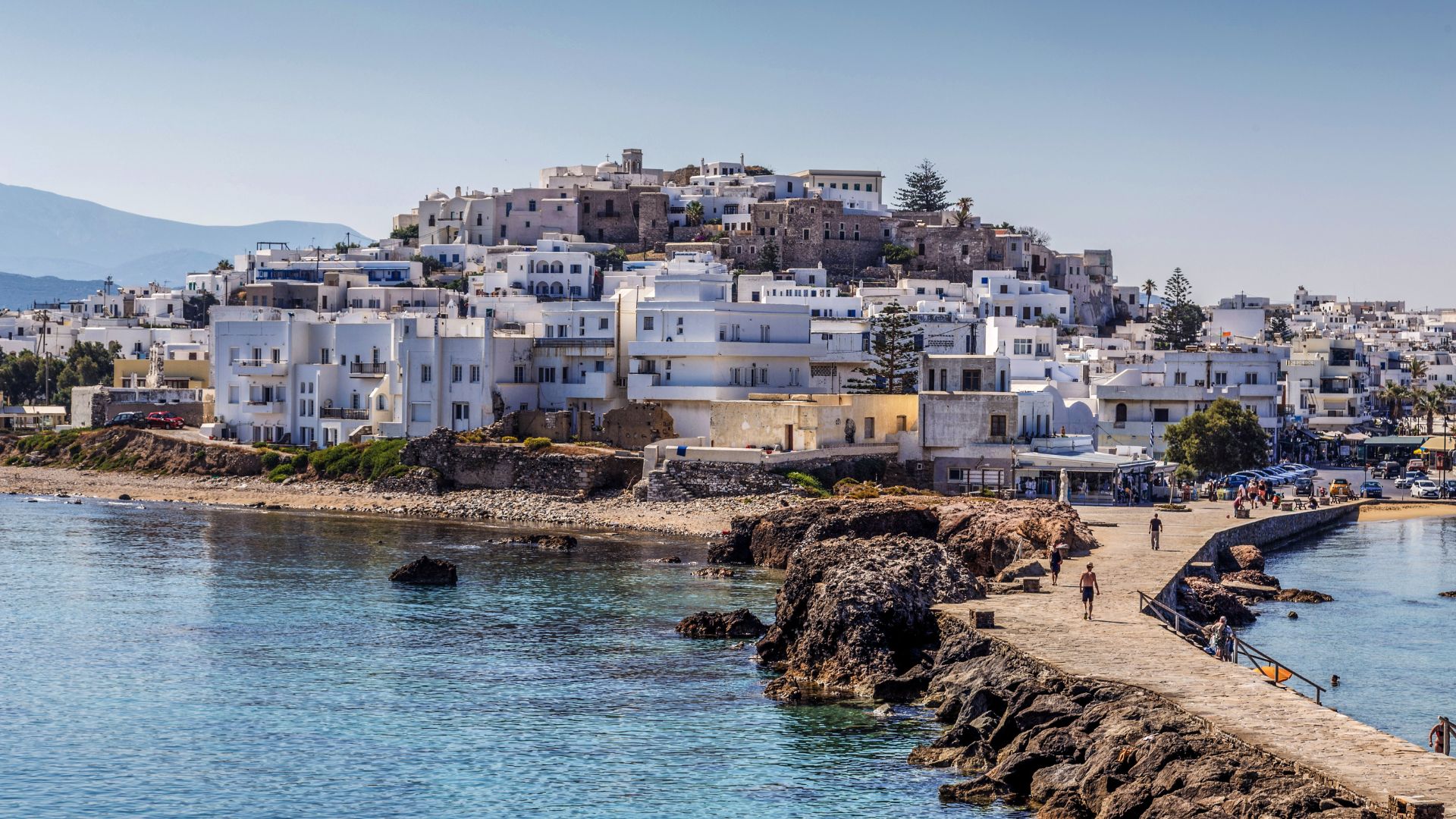
Comparing Naxos with Santorini, Paros, and Mykonos
I hopped around a few Greek islands before I realized how Naxos stands apart.
Santorini is famous for its cliffs and sunsets, but wow, it gets crowded and touristy, especially in summer. Mykonos shines with luxury and wild nightlife, but the prices can sting and the beaches fill up fast. Paros has charm and some great surf, but Naxos offers more space, more green, and a deeper sense of history.
| Island | Best for | Downsides |
|---|---|---|
| Naxos | Variety, families, food | Fewer high-end clubs |
| Santorini | Sunsets, romance | Crowded, expensive |
| Mykonos | Nightlife, luxury | Very expensive, busy |
| Paros | Watersports, easygoing | Fewer historical sites |
What I love is that Naxos lets me escape the crowds without missing out on good food or things to do. The island isn’t just about sunbathing—it’s a sweet mix of culture, tradition, and raw beauty.
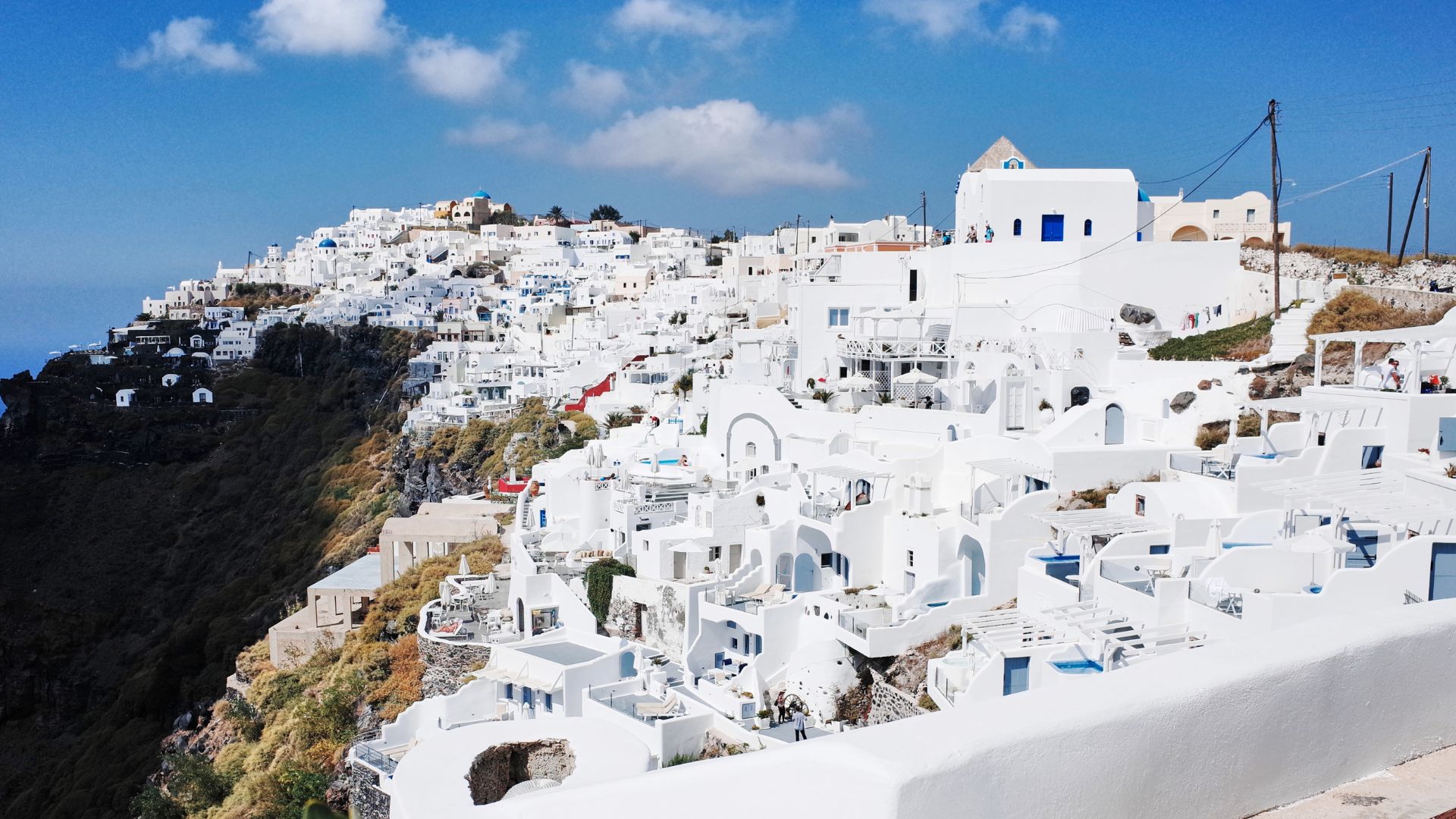
The Best Time for a Greek Island Escape
I once landed in Naxos in early June and found the beaches nearly empty. The weather hit that perfect warm-but-not-roasting spot, and the villages buzzed with life but weren’t packed.
High season (July-August) brings the crowds and the heat. Sure, the nightlife ramps up, but honestly, I prefer late spring or early fall. May, June, September, and October mean lower prices, cooler evenings, and a mellow vibe—perfect for wandering villages or hiking ancient trails.
Seasonal travel tips:
- Spring: Wildflowers, local festivals, mild temps
- Summer: Best for swimming, lively beaches, but expect more people
- Fall: Warm sea, grape harvest, way fewer tourists
Unlike the overrun Cycladic hotspots, Naxos still feels like a real escape in the shoulder seasons. That’s my kind of travel.
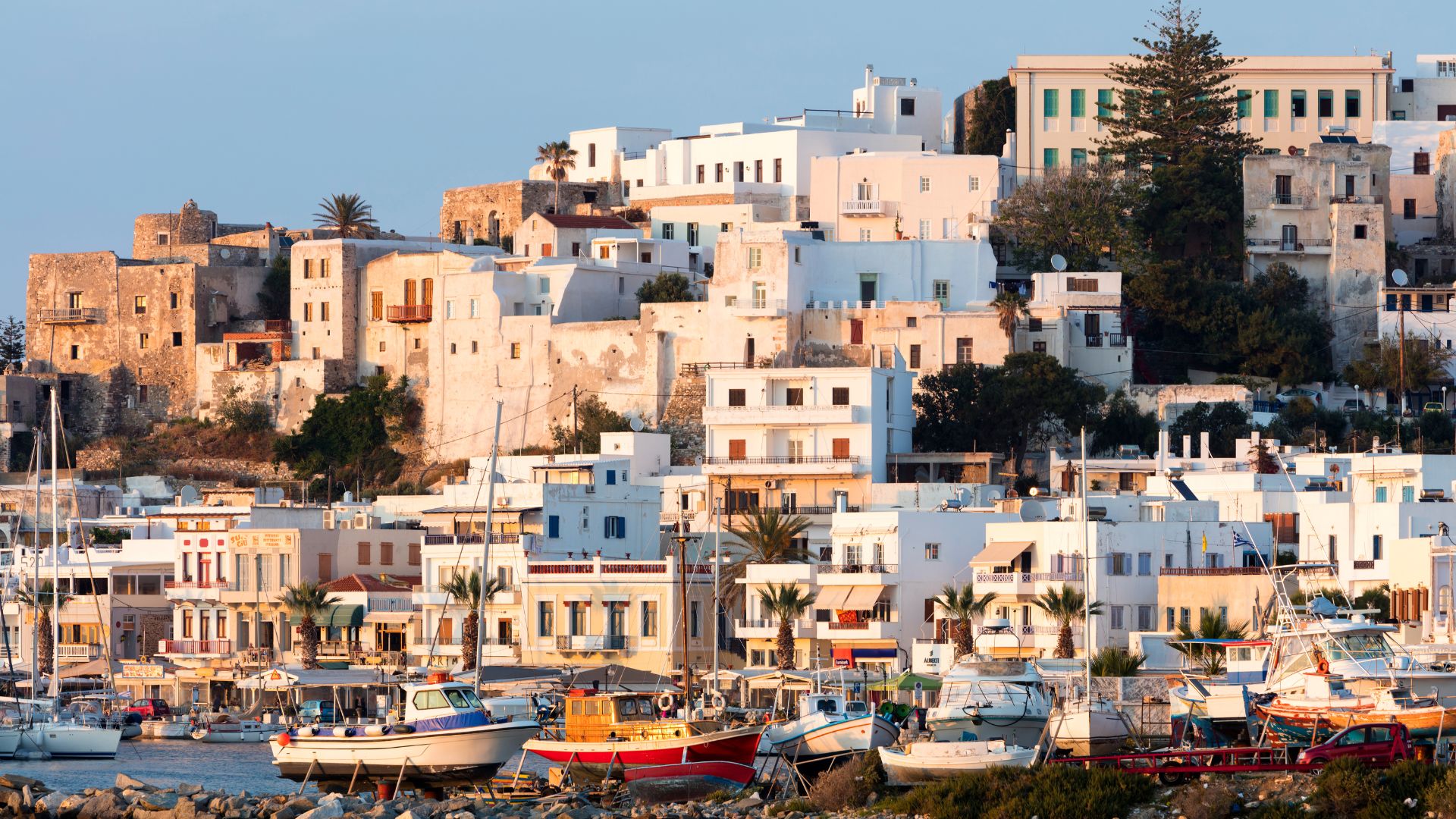
Ancient Wonders and Timeless Heritage
Naxos feels like a living museum, packed with ancient ruins, Bronze Age relics, and centuries-old stories. As I lose myself in the winding streets and quiet villages, I keep stumbling across myths, art, and landmarks that bring Greek history to life.
Portara and the Legends of Greek Mythology
At sunset, I get drawn to the Portara—a giant marble doorway rising above Naxos’s harbor. Built in the 6th century BCE, it’s the only thing left from a huge sanctuary for Apollo. The frame, almost haunting in its simplicity, glows with that late afternoon light.
Legend has it these stones watched Ariadne’s story unfold. She got left behind by Theseus in Naxos and met Dionysus near here. Local guides love to share their own takes on the myth, and honestly, it feels like the stories still drift on the wind. The Portara isn’t just for photos—it’s a portal to the legends that shaped the West.
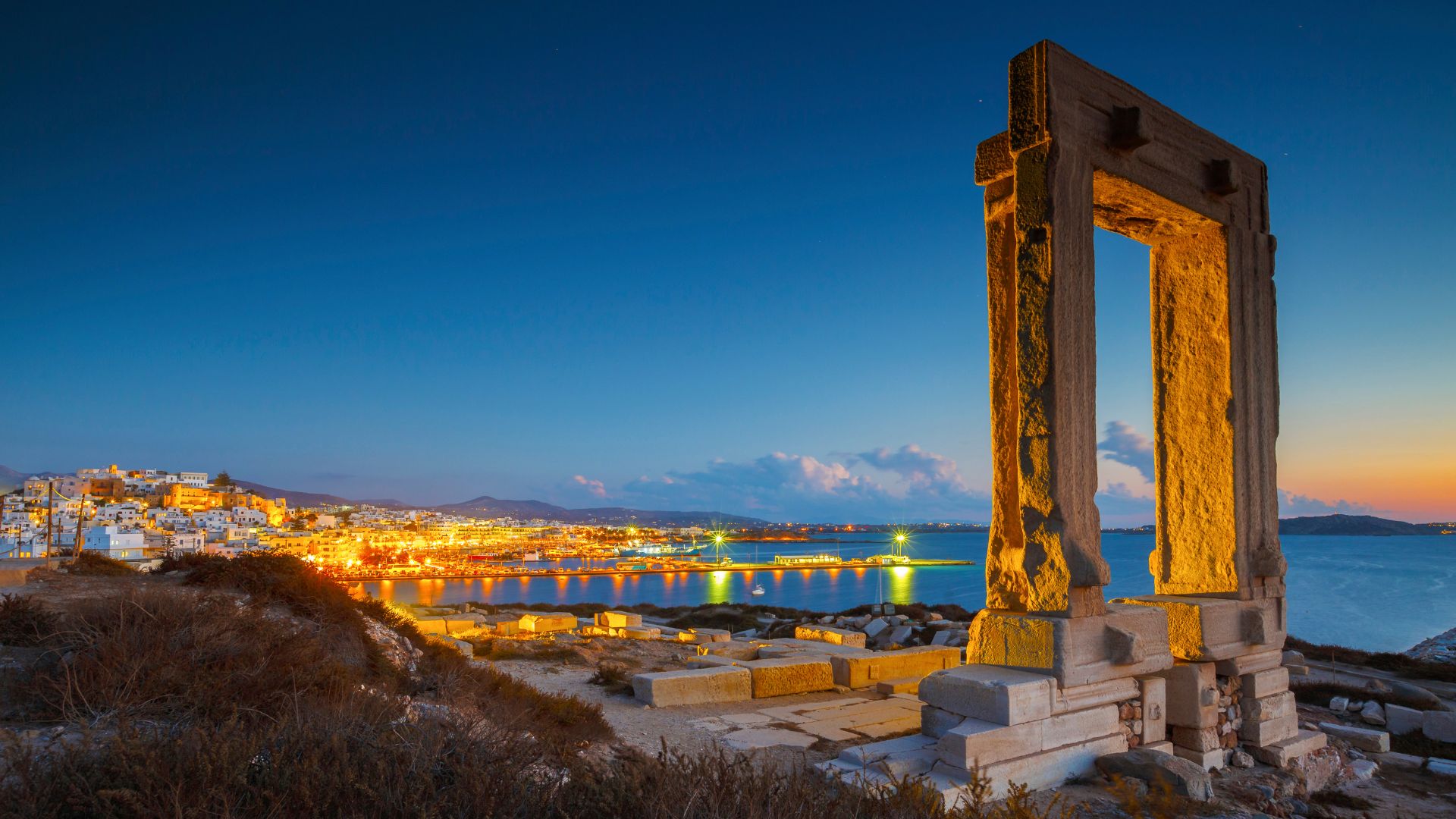
Historic Sites and Artifacts from the Bronze Age
All over Naxos, you’ll find remains from the early Bronze Age (about 3200–1100 BCE). I followed winding roads and clambered up rough paths to crumbling towers and ancient settlements. Some of the coolest ruins sit near Sangri Village, like the Temple of Demeter from 530 BCE, built right where older Bronze Age buildings once stood.
I marveled at tombs, pottery shards, and stone tools—little clues about how people lived thousands of years ago. Even in random farm fields, I spotted old walls and foundations. If you geek out over early Greek history, these sites really show how islanders shaped their world with just stone and grit.
Museums and Cycladic Figurines
Inside the Archaeological Museum in Chora, I stood face-to-face with marble Cycladic figurines, each one carved more than 4,000 years ago. These simple, abstract shapes with folded arms came from burial sites here on the island. Their smooth white forms look surprisingly modern, and I get why artists still find them inspiring.
The museum also displays Cycladic jewelry, pottery, and Bronze Age tools. Everything’s labeled in Greek and English, so I could actually follow along. I took my time moving between the displays, trying to piece together what daily life looked like for ancient Naxians. For visitors, the museum ties together all the scattered ruins you find around the island.
A Walk Through Naxos Town’s Old Quarter
When dusk settles, I love wandering the Old Quarter (Kastro) of Naxos Town. Cobblestone lanes twist between Venetian mansions and peek over old chapels. Here, the Middle Ages bump right into the Classical age.
It’s way too easy to lose track of time as I duck into tiny shops built into arched stone buildings—some of them centuries old. I checked out the Venetian Museum inside an old mansion filled with historic objects, and admired crumbling city walls that once kept pirates at bay.
Locals keep a lot of traditions alive—sometimes you’ll hear live music in the squares or spot artisans at work. I really recommend just wandering slowly and letting the past sneak up on you.
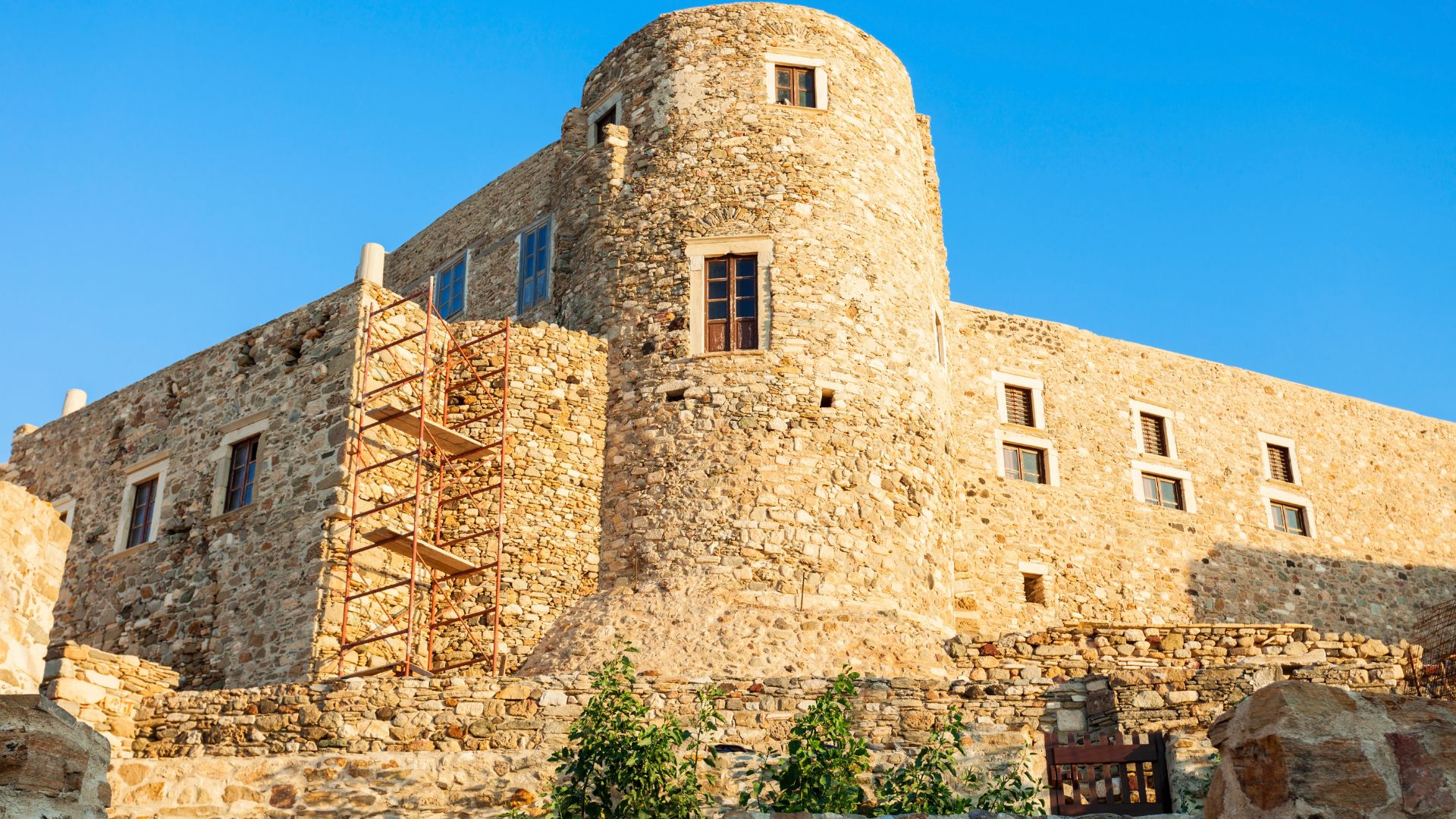
Naxos Beaches That Go On Forever
I don’t think any place has captured my imagination quite like the endless coastlines of Naxos. The island mixes soft sands, clear Aegean water, and a beach vibe for everyone—from romantic couples to families chasing sun and adventure.
The Best Sandy Shores: Agios Prokopios to Plaka
I usually kick off my beach days at Agios Prokopios. The sand stretches out for more than 1.5 kilometers, and the turquoise sea looks like a postcard come to life.
You’ll find plenty of loungers, umbrellas, and easy taverna access for grilled fish. It’s a favorite for a reason—especially for couples who want comfort or families needing calm, shallow water.
If I walk south, the coastline leads me to Agia Anna and Plaka Beach. Plaka is the longest beach on Naxos, known for its fine sand and dunes. The farther I wander, the quieter it gets. Plaka has both organized spots with bars and long empty stretches where I just sprawl out and listen to the waves. Swimming here feels endless, thanks to the gentle slope into the sea.
Here’s a quick look at my top picks:
| Beach | Atmosphere | Best For |
|---|---|---|
| Agios Prokopios | Lively | Families, Couples |
| Agia Anna | Relaxed | Couples |
| Plaka | Quiet/Natural | Anyone |

Hidden Gems and Secluded Coves
I love poking around off the beaten path, and Naxos is perfect for that. Alyko Beach sits surrounded by cedar trees and sand dunes. It feels wild and untouched, just right for when I need some privacy.
The Hawaii Beach cove takes a little effort to reach—down a short path—but the turquoise water and soft white sand make it totally worth it. Sometimes, I barely see another soul all day.
Mikri Vigla is another favorite, especially for a quiet morning swim. Windsurfers show up in the afternoon thanks to steady breezes, but you can find hidden corners along the rocks if you want to sunbathe in peace. These smaller beaches are perfect when I want a break from the crowds or just want to see the wilder side of the island.
Tip: Pack snacks and water for these hidden spots, since shops and restaurants are scarce.
Beach Adventures for Couples and Families
Some of my best Naxos memories come from beach adventures. Agios Prokopios and Plaka have stand-up paddleboards (SUP), sea kayaks, and snorkeling gear for rent. For couples, a sunset walk along Plaka is hard to beat. The sky glows gold, the sand stays warm, and the waves set a calm rhythm. Even near the beach clubs, it feels private.
Families love Agios Prokopios for its safe, shallow water. Kids can spend hours collecting shells. Older kids try windsurfing at Mikri Vigla, where instructors welcome everyone. I’ve caught myself smiling, watching families laugh and splash, sharing picnics under straw umbrellas.
To make the most of summer here, I always bring sunscreen, a hat, and my camera. Every turn along the coast seems to reveal a new view, a secret cove, or a sandy spot that feels like it’s just for me.
Charming Mountain Villages and Local Life
Wandering through Naxos’s mountain villages feels like stepping into the past. Stone paths wind between whitewashed homes and hidden squares.
I discovered local traditions, tasted dishes made from fresh island ingredients, and got a glimpse of the rhythms of village life.
Exploring Apeiranthos and Halki
Apeiranthos and Halki quickly became two of my favorite villages. Apeiranthos perches high in the mountains, famous for its marble streets and old Venetian towers.
As I wandered its narrow alleys, I stumbled into cozy cafés, small museums, and art galleries. The place feels like time forgot it, with locals speaking a unique dialect and sharing stories about their ancestors.
Halki sits in the fertile Tragea valley and has a different vibe. Neoclassical mansions and Byzantine churches hint at an old wealth.
I toured a historic distillery and sipped kitron, a citrusy liqueur you’ll only find on Naxos. The quiet main square became my go-to spot for Greek coffee and people-watching.
Olive Oil Tasting and Other Culinary Delights
Food in Naxos’s villages stands out as a highlight for any visit. I tasted freshly baked bread with golden Naxian olive oil drizzled on top—a staple you’ll find on every village table.
Olive oil tastings really surprised me. The flavors jumped from light and buttery to bold and peppery, depending on the grove. Each oil told its own story about the land.
Local specialties? They’re everywhere. I tried graviera cheese, louza (that’s a cured pork), and sweet preserves made from orchard fruit.
Many tavernas are family-run, and eating there often felt like being invited into someone’s home kitchen. Sometimes, I’d get a complimentary plate of olives or a slice of homemade cake at the end. That’s just how it is.
If you’re into regional food, village markets and festivals offer a perfect chance to sample homemade treats.

Traditional Festivals and Unique Village Culture
Village life in Naxos really comes alive during local festivals, the panigiria. I got lucky and joined a summer festival in Filoti—people packed the square for live music, dancing, and feasts of lamb and traditional pies.
These events celebrate religious holidays or agricultural milestones, and everyone’s welcome—locals and visitors alike.
What struck me most? The sense of community. Laughter fills the streets, kids play, and elders swap stories about Naxos’s Greek history.
Some customs still thrive, like spinning wool by hand or baking bread in wood-fired ovens. Folk dances and music, passed down through families, give the villages a timeless feeling. Every visit sticks in your memory.
Exploring Beyond Naxos: Island Hopping and Day Trips
With Naxos as my base, I found it surprisingly easy to check out the nearby Cyclades. Ferries took me to islands like Paros, Mykonos, and Santorini, each day trip bringing something different—ancient ruins, postcard beaches, vibrant villages.
Island Hopping to Paros, Mykonos, and Santorini
Leaving Naxos for a day or two, I hopped on local ferries headed for Paros, Mykonos, and Santorini. Every island showed me a new side of the Aegean.
Paros was my first stop—close by, with charming old towns. In Parikia, stone streets welcomed me, and golden beaches like Kolymbithres made for a perfect afternoon swim.
I wandered narrow lanes and enjoyed fresh seafood in Naoussa.
Mykonos called next, just a short ferry ride away. Sure, it’s famous for whitewashed houses and nightlife, but I also loved the history—the windmills, the Little Venice area.
For a break from the crowds, I found a quiet beach outside the busy town.
Santorini was the grand finale. The ferry ride alone delivered jaw-dropping views—those blue-domed churches perched above the sea.
Exploring Fira and Oia’s cliffside paths gave me photos and memories I’ll never forget.
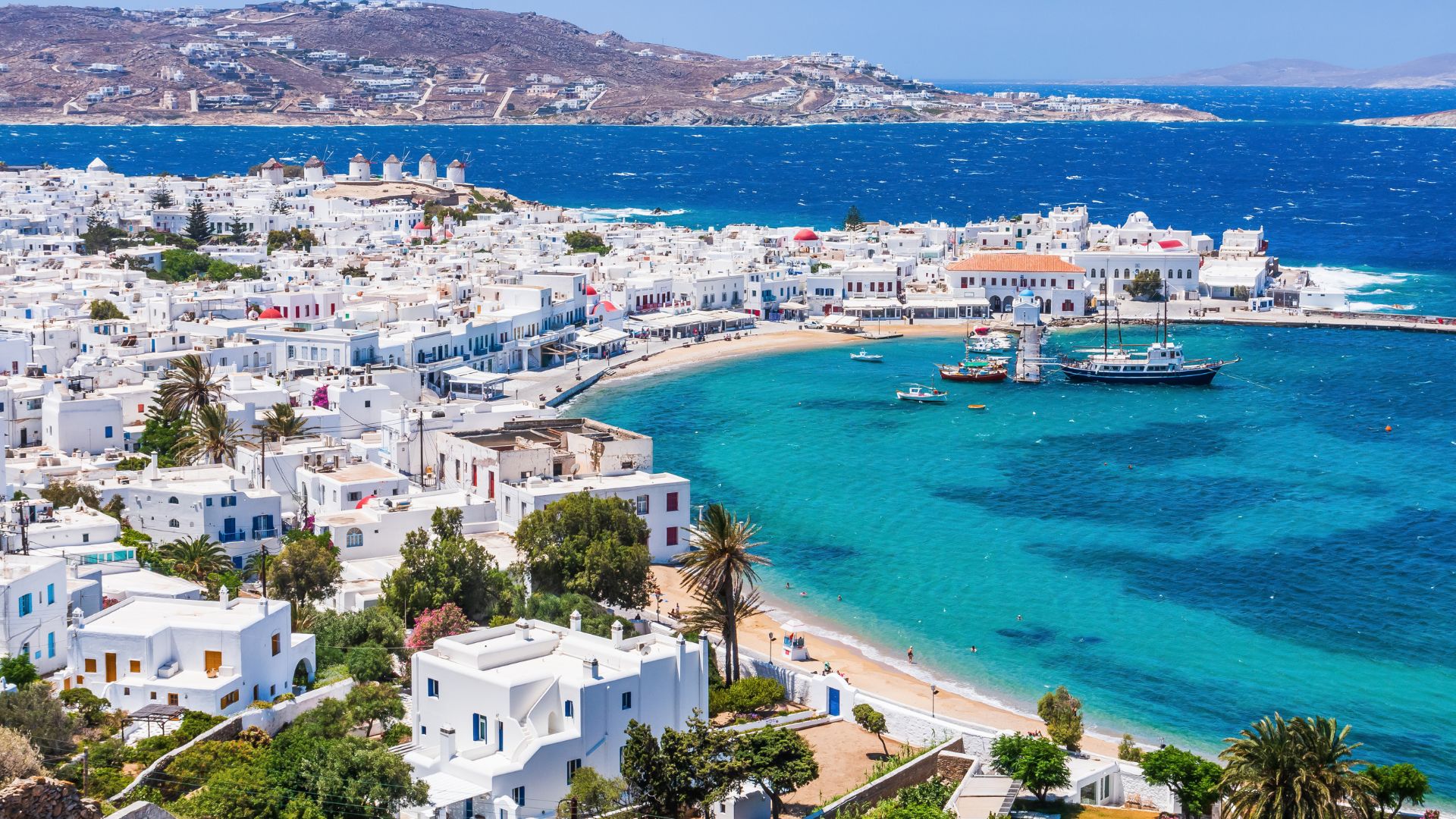
Ferry Rides and Getting Around the Cyclades
Getting from island to island felt pretty easy and flexible. I used ferry companies like Blue Star Ferries and SeaJets. Most ferries leave from Naxos port and run often in the summer.
Schedules can change, so I always checked ahead and booked tickets early for busy days.
Travel Tip:
- Travel times vary:
- Naxos to Paros: 30-45 minutes
- Naxos to Mykonos: about 1 hour
- Naxos to Santorini: 2 hours
- Tickets go from basic economy seats to high-speed options.
Once I arrived, public buses and taxis helped me get around. Renting a scooter or quad bike made it even easier to find hidden coves and quieter villages off the main roads.
Inspiration for the Ultimate Greek Island Adventure
The Greek islands are actually closer together than I expected, so it’s totally doable to combine Naxos, Paros, Mykonos, and Santorini in one trip. Each island has its own vibe—relaxed beaches on Paros, party energy in Mykonos, dramatic views in Santorini, and mountain villages in Naxos.
Ideas for an island-hopping itinerary:
- Start in Naxos: Beaches and ancient sites.
- Day trip to Paros: Traditional villages and beach hopping.
- Mykonos for nightlife and scenic strolls.
- Finish in Santorini: Explore caldera cliffs and volcanic sands.
I mixed guided tours with solo exploring, changing plans as the weather or ferry times shifted. Some travelers even visit the Small Cyclades—tiny islands like Koufonisia—for peace and crystal-clear water before heading back to the busy hubs. Every island-hopping trip feels a bit different, and honestly, that’s why I keep coming back.
Getting to Naxos and Essential Travel Tips
Getting to Naxos is simpler than most people think. Exploring the island gets even easier with a little planning.
The right transportation and accommodation choices really do make a difference in comfort and experience.
Ferries from Athens and Piraeus Port
I started my journey to Naxos with a ferry ride from Piraeus Port near Athens, the main gateway to the Greek islands.
Several ferry companies run this route, including Blue Star Ferries and SeaJets. Ferries leave daily, and the trip usually takes about 4 to 6 hours, depending on whether you choose conventional or high-speed.
Timetable Quick Facts:
| Port | Company | Duration | Frequency |
|---|---|---|---|
| Piraeus (Athens) | Blue Star | 5-6 hours | Daily |
| Piraeus (Athens) | SeaJets | 3.5-4 hours | Daily/Seasonal |
Booking tickets online ahead of time helped me get a seat during the busy months (June to September). The metro from central Athens to Piraeus Port is fast and cheap, taking about 30 minutes.
Arriving at least an hour early is smart, since the port gets crowded, especially in summer.
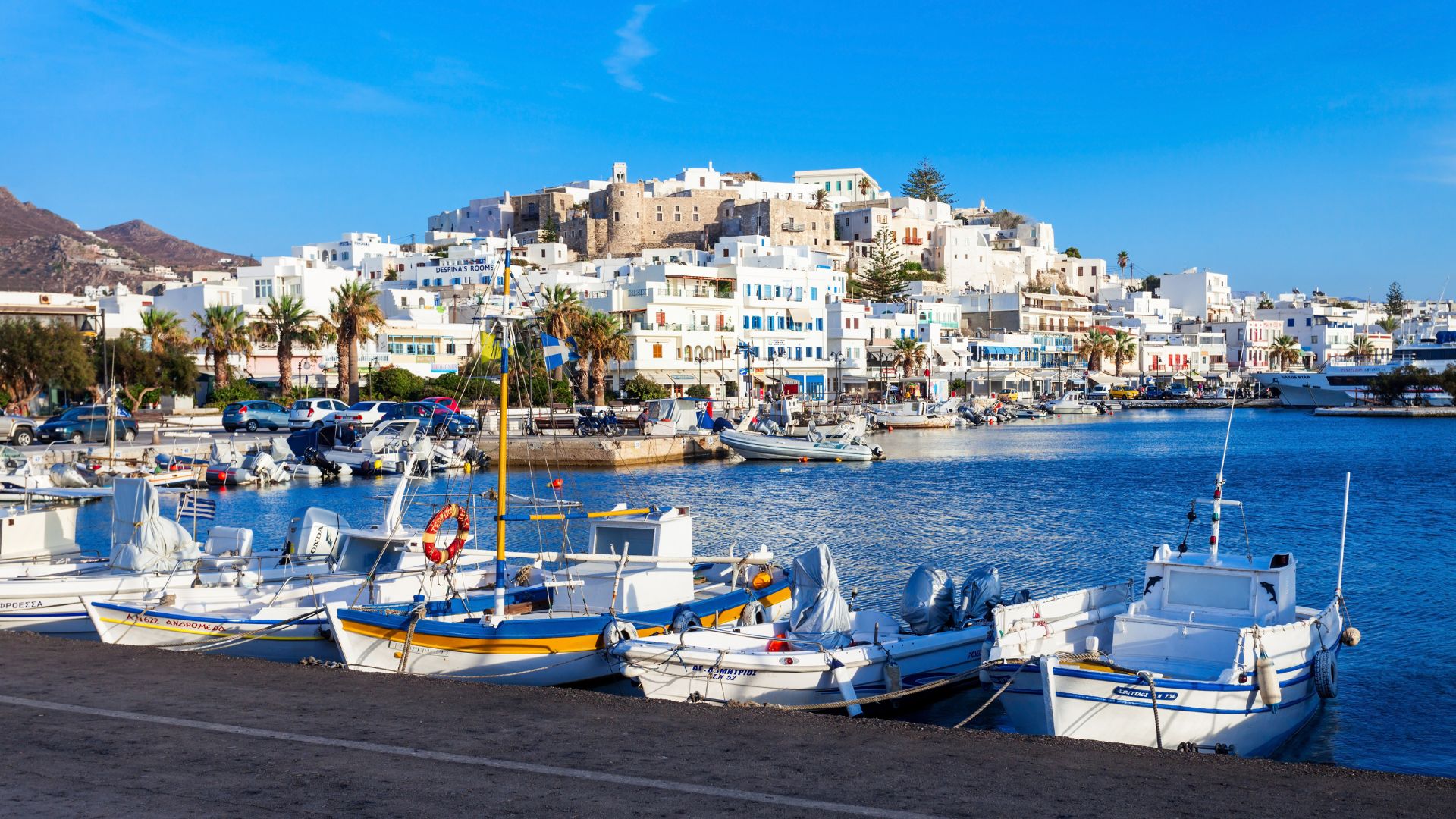
Navigating the Island: Car Rentals and Local Transport
When I arrived on Naxos, I realized the beaches, villages, and sites are pretty spread out. Renting a car made exploring much easier and let me visit mountain towns like Apeiranthos or wind along coastal roads at my own pace.
I compared prices at several rental agencies right at the port. Most cars have manual transmissions, but automatics are available if you pay a bit more. Tip: Booking online before you arrive usually means better rates and more choices.
If you don’t want to drive, local KTEL buses connect the main villages and beaches. They run regularly in summer, but less often in the off-season.
Taxis are available and reliable, though they cost more. Biking is another scenic option, especially around Naxos Town (Chora) and the flatter coastal areas.
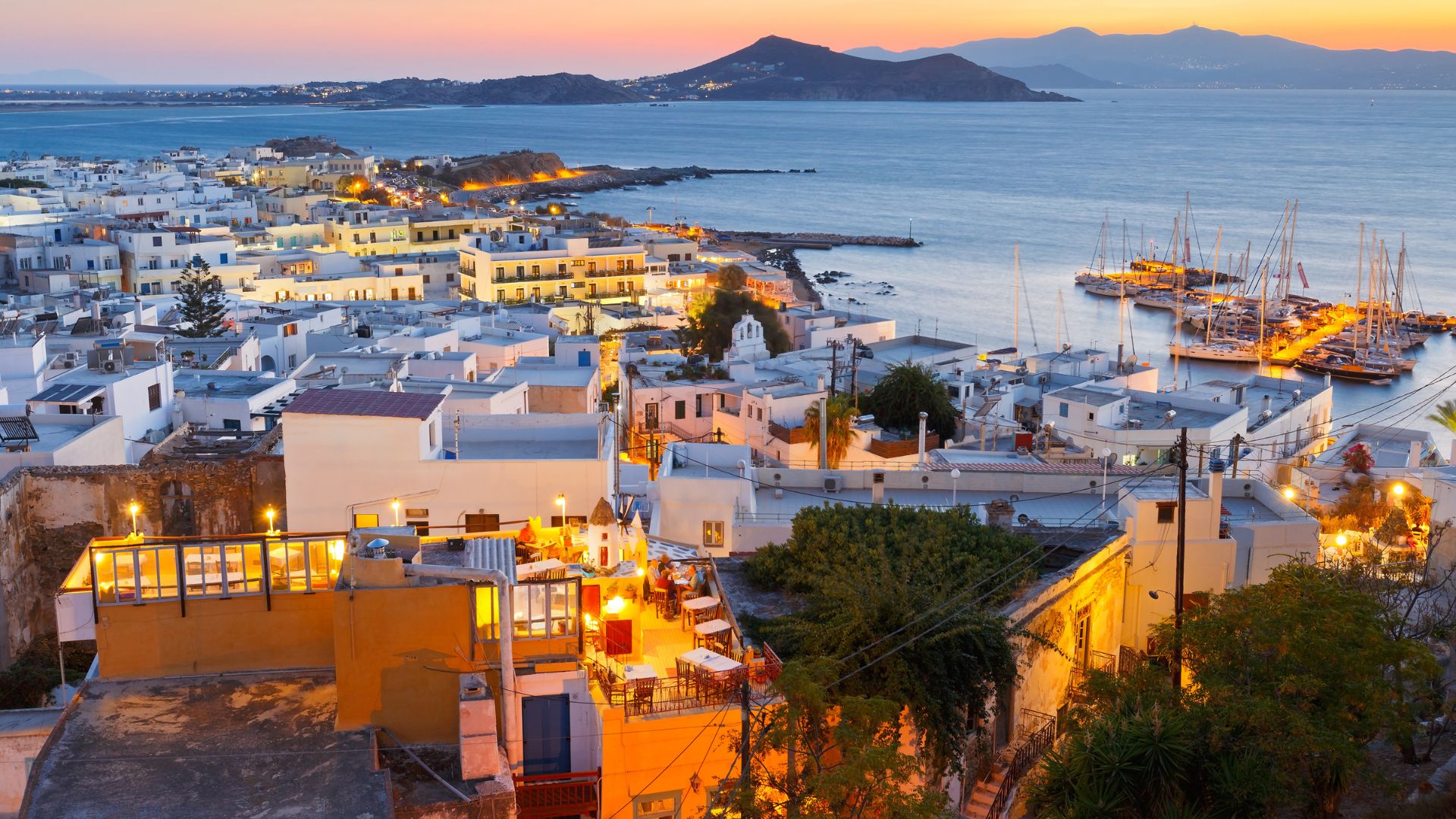
Tips for Planning Your Stay and Accommodation
I planned my stay around the ferry timetable, which honestly made things so much easier—especially when I had to arrive late or leave early. Most inns and hotels in Naxos Town sit close to the port, so it’s super convenient for your first or last night.
I usually start out here for the easy transport links, then I switch to a beachside hotel for the rest of my trip. That change of scenery always feels refreshing.
Accommodation tips:
- Book early if you’re coming in summer—rooms disappear fast.
- Pick a mountain village if you want peace and a more authentic vibe.
- Beach hotels put you steps from the sea, which is perfect for families or anyone who just wants to sunbathe.
Most places throw in breakfast and free Wi-Fi, which is always a nice touch. If you ask about port transfers, you might save yourself some hassle—especially after a long ride from Athens.

